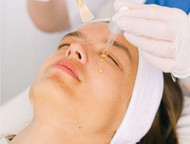Tetrahexyldecyl Ascorbate vs Ascorbic Acid: Which One is Best for Your Skin?
Posted by Pure Cosmetica on 16th Feb 2023
Learn the differences between these two forms of Vitamin C and find out which one is best for your skin's needs.
Vitamin C is a popular and highly sought-after ingredient in skincare due to its ability to brighten the skin, boost collagen production and provide antioxidant protection.
However, not all forms of Vitamin C are created equal and choosing the right one can make a big difference in the effectiveness of your skincare routine. Two of the most common forms of Vitamin C found in skincare products are Ascorbic Acid and Tetrahexyldecyl Ascorbate.
Solubility and effectiveness
Ascorbic Acid is a water-soluble form of Vitamin C and has been used in skincare for decades. It is a powerful antioxidant that helps protect the skin from damage caused by free radicals and has been shown to reduce the appearance of fine lines, wrinkles, and hyperpigmentation. However, Ascorbic Acid is highly unstable and can easily break down in the presence of light, air, and heat, leading to a reduction in its effectiveness and potential irritation for those with sensitive skin.
Tetrahexyldecyl Ascorbate is a more stable and less irritating form of Vitamin C. It is an ester of Ascorbic Acid and is fat-soluble, meaning that it is easily absorbed by the skin more effectively and to provide long-lasting benefits.
Studies have shown that Tetrahexyldecyl Ascorbate was more effective for skin brightening1, more stable2, and a more effective antioxidant than Ascorbic Acid by being able to penetrate the skin more effectively2.
Better delivery into the skin is driving better results.
/ON THE JOURNAL
4 Benefits of Using Vitamin C Face Oil Serums
Face oils are a fantastic product to have in your skincare routine. They are great for keeping your skin nourished and moisturised during winter
Acidity and concentration
Ascorbic Acid is highly acidic with a 2.0 to 3.5 pH, and disrupts the skin's natural pH balance, causing irritation and dryness. Tetrahexyldecyl Ascorbate is less acidic with a neutral pH3, making it less likely to cause irritation or skin sensitisation.
Ascorbic Acid is typically used in lower concentrations in skincare products due to its instability, as opposed to Tetrahexyldecyl Ascorbate which can be used in higher concentrations due to its stability and effectiveness.
Using Tetrahexyldecyl Ascorbate
As an oil-based vitamin, Tetrahexyldecyl Ascorbate mixes well with other carrier oils in the formulation of Pure Body Luxe ADVANCED-C Face Oil Serum.
We purposefully chose to use Tetrahexyldecyl Ascorbate at 1.0% so that Pure body Luxe ADVANCED-C Face Oil Serum can be used safely every day with no build up.
The carrier oils from 21 botanical and essential oils in ADVANCED-C’s formulation naturally contain high amounts of Vitamin C. The high amount of antioxidants in the formulation, boosts Tetrahexyldecyl Ascorbate’s efficacy to have a longer shelf life.
The Verdict
Tetrahexyldecyl Ascorbate is definitely the winner as it is more stable, less irritating on the skin and more effective form of Vitamin C than water-based alternatives.
The effectiveness of Tetrahexyldecyl Ascorbate together with the 21 botanical and essential oils (which are also high in Vitamin C), make Pure body Luxe ADVANCED-C Face Oil Serum is the most unique product on the market.
Results depend on individual needs, skin type and tolerance, so it is always best to consult with your dermatologist or skincare professional to determine which form of Vitamin C is best for your skin needs.
SHOP THE COLLECTION
References:
1. Nakamura, M., & Funayama, E. (2017). Efficacy of ascorbyl tetraisopalmitate in skin whitening and its stability in solution and in the skin. Journal of Clinical, Cosmetic and Investigational Dermatology, 10, 91-99.
2. Cho, S. H., Kim, H. S., Lee, J. H., & Kim, H. J. (2008). Differential effects of ascorbic acid and its derivatives on melanogenesis and tyrosinase activity. Journal of Cosmetic Science, 59(4), 379-391.
3. Telang PS. Vitamin C in dermatology. Indian Dermatol Online J. 2013;4(2):143-146.
 AUD
AUD  US Dollar
US Dollar

